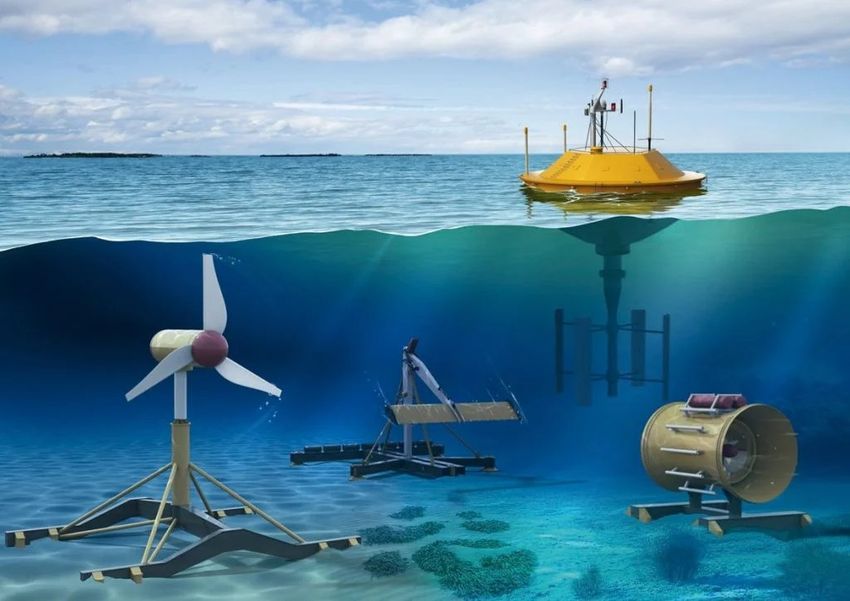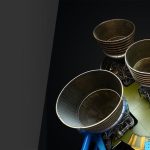Introduction: The Untapped Power of the Ocean
Did you know that the moon’s gravitational pull on Earth’s oceans creates an incredible energy source? Tidal energy is one of the most powerful yet underutilized renewable energy sources available. Unlike solar and wind energy, tidal power is predictable, making it a reliable and sustainable solution for the future.
But how exactly do we harness the energy of the ocean? Let’s explore the mechanical engineering, technology, and future of tidal power plants!
1. What is Tidal Energy?
Tidal energy is a form of hydropower that converts the movement of ocean tides into electricity. Since tides are created by the gravitational interaction between the Earth, Moon, and Sun, they occur with clockwork precision, making tidal energy a more reliable power source than wind or solar.
A. How Tides Generate Energy
1️⃣ The rise and fall of ocean tides create kinetic energy.
2️⃣ This energy is captured using turbines, barrages, or floating systems.
3️⃣ The mechanical movement is converted into electrical power using generators.
4️⃣ The generated electricity is transmitted to power grids for use in homes and industries.
💡 Fun Fact: Tidal energy has been harnessed since the Middle Ages, when people used tidal mills to grind grain!
2. Types of Tidal Energy Systems
There are three primary technologies used to capture tidal energy:
A. Tidal Barrages (Dams for the Ocean) 🌊🛑
- How It Works: A dam-like structure (barrage) is built across a river estuary. When the tide rises, water flows into the basin behind the barrage. As the tide lowers, the stored water is released through turbines, generating electricity.
- Example: The La Rance Tidal Power Plant (France) produces 240 MW of electricity, powering 225,000 homes.
✔️ Pros:
✅ Large energy output
✅ Reliable and predictable power
✅ Long lifespan (over 100 years)
❌ Cons:
❌ High construction cost
❌ Can impact marine ecosystems and fish migration
B. Tidal Stream Turbines (Underwater Windmills) 🌊⚙️
- How It Works: These turbines work like wind turbines, but instead of wind, they are powered by strong underwater currents.
- Example: The MeyGen Project (Scotland) uses tidal stream turbines to generate 6 MW of electricity.
✔️ Pros:
✅ Minimal impact on marine life
✅ Cheaper than barrages
✅ Scalable and flexible installation
❌ Cons:
❌ Less efficient than barrages
❌ Maintenance is difficult due to underwater location
C. Dynamic Tidal Power (Experimental Future Tech) 🔬🌊
- How It Works: A long T-shaped dam is built offshore, capturing energy from tidal waves moving parallel to the coast.
- Example: China and the Netherlands are experimenting with this technology for large-scale tidal power plants.
✔️ Pros:
✅ Could generate massive amounts of power
✅ No need for enclosed estuaries
❌ Cons:
❌ Still in experimental stages
❌ High construction cost
3. Benefits of Tidal Energy: Why It’s the Future of Clean Power
✅ Predictable & Reliable – Unlike solar and wind, tidal cycles follow a fixed pattern.
✅ Zero Carbon Emissions – 100% clean and green energy.
✅ Long-Lasting Infrastructure – Tidal power plants can last 100+ years.
✅ No Fuel Costs – The ocean is free, reducing dependency on fossil fuels.
4. Challenges of Tidal Energy & How Engineers Are Solving Them
🚧 A. High Initial Costs – Tidal power plants are expensive to build.
🔧 Solution: Engineers are developing cheaper materials and modular turbine designs to reduce costs.
🐟 B. Impact on Marine Life – Tidal barrages can disrupt fish migration.
🔧 Solution: Fish-friendly turbines and marine life protection programs are being introduced.
🏗 C. Limited Locations – Tidal energy requires strong tidal currents, which only exist in specific coastal areas.
🔧 Solution: Floating tidal platforms can expand the number of potential sites.
5. Future of Tidal Energy: What’s Next?
A. Floating Tidal Energy Farms 🚢⚡
- New designs allow turbines to be mounted on floating platforms, reducing costs and increasing accessibility.
B. AI-Powered Tidal Energy Grids 🤖💡
- Artificial Intelligence (AI) is being used to optimize energy output, predicting tidal movements more accurately.
C. Hybrid Renewable Energy Systems 🌞💨🌊
- Some projects combine tidal, solar, and wind energy to create 24/7 renewable power grids.
💡 Example: South Korea’s Sihwa Lake Tidal Power Plant produces 254 MW of electricity, making it the largest tidal power station in the world!
6. Conclusion: Can Tidal Energy Power the Future?
Tidal energy has the potential to be a game-changer in clean energy production. As technology advances, costs will decrease, and more countries will invest in ocean power.
With climate change and the demand for sustainable energy increasing, harnessing the ocean’s power is no longer a dream—it’s the future! 🌍⚡


